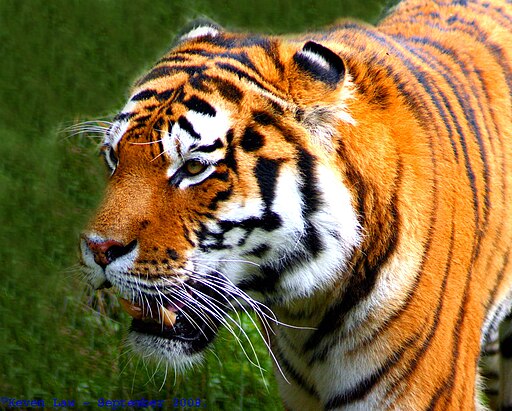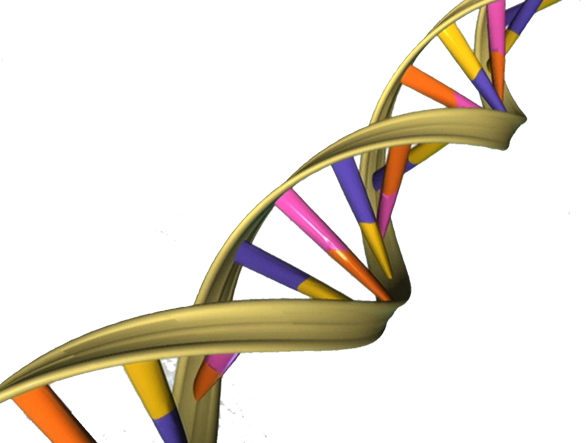Spirals are mythical symbols across human history and around the globe. But spirals are much more than a human cultural and spiritual phenomenon.
Spirals permeate all aspects of biology, and they are present throughout the universe.
 Many of these spirals are of a special kind called "equiangular."
Many of these spirals are of a special kind called "equiangular."
In an equiangular spiral a line from the center always crosses the curve at the same angle. Also, the spiral whorls increase in a constant ratio.
Among equiangular spirals, one type receives great attention:
the "golden spiral."
In a "golden spiral" the whorls increase in ratios of Fibonacci numbers: the "golden ratio" or the "golden mean."
 To get the Fibonacci series, start
with 0 and 1. Add the previous two numbers to get the next number.
To get the Fibonacci series, start
with 0 and 1. Add the previous two numbers to get the next number.
The proportion between two adjacent numbers in the Fibonacci series tends to 1.618, aka the golden mean. So, a golden rectangle has Fibonacci numbers for sides, and a spiral inscribed within golden rectangles is a golden spiral.
It may sound like nothing but a pretty number game, but it's not.
Fibonacci
numbers are found throughout nature. (Although many general equiangular spirals,
like the nautilus shell, are mistakenly labeled "golden" on the web, it doesn't mean real ones don't exist.)
Spirals permeate all aspects of biology, and they are present throughout the universe.
 Many of these spirals are of a special kind called "equiangular."
Many of these spirals are of a special kind called "equiangular."In an equiangular spiral a line from the center always crosses the curve at the same angle. Also, the spiral whorls increase in a constant ratio.
 |
| The path pf an insect moving towards the light. |
 |
| The chambered nautilus |
Among equiangular spirals, one type receives great attention:
the "golden spiral."
In a "golden spiral" the whorls increase in ratios of Fibonacci numbers: the "golden ratio" or the "golden mean."
 To get the Fibonacci series, start
with 0 and 1. Add the previous two numbers to get the next number.
To get the Fibonacci series, start
with 0 and 1. Add the previous two numbers to get the next number.The proportion between two adjacent numbers in the Fibonacci series tends to 1.618, aka the golden mean. So, a golden rectangle has Fibonacci numbers for sides, and a spiral inscribed within golden rectangles is a golden spiral.
It may sound like nothing but a pretty number game, but it's not.
 |
| Fibonacci numbers in rows of pine cone seed scales. |
 |
| Golden proportions of a human finger. |
But back to mythic symbols.
Fibonacci numbers ring a bell of rightness in the human psyche. These proportions are strangely alluring.
Satisfying.
Dynamic.
That's why artists still use what Renaissance painters called "the secret geometry of painting."
Architectural elements in Da Vinci’s The Last Supper are sized to the golden mean.
![Georges Seurat [Public domain], via Wikimedia Commons](https://blogger.googleusercontent.com/img/b/R29vZ2xl/AVvXsEgId08eNSgRQug9O-8PM7bj0HPhGqMiE9mKdmzJ63e9ogCwCRsLmG7xT1k2m19Xfbsb8720R-aJElar1DexNzJq8YuyzE6_y-DHDHBjiXQ1vfPeB6P-gB2lNGr5H4MByPUsKbWpiOcZO_4H/s200/Seurat,+Sunday_on_La_Grande_Jatte_1884.jpg)
The verticals and eye heights of figures in Seurat's A Sunday Afternoon on the Island of La Grande Jatte produce golden rectangles.
We humans are part of nature.
That's why we respond to spirals, and especially golden spirals, with an involuntary quickening of spirit. But does that mean spirals have no spiritual power, that their meaning is a human projection onto the universe?
No. Just the opposite.
We didn't invent the importance of spirals. We didn't invent our response to spirals. They and we are both expressions of the energy pattern of the universe.
Does that make the energy mundane? Yes.
It also makes the energy divine.
Mundane divine. Divine mundane. Why is that so very difficult to accept?
What if part of our natural, biologic role is what we humans have done for millennia: act as amplifiers for earth systems by translating universal energy patterns into words and rituals?
What if that is also our spiritual role in the universe?
What if.
As the Bard said, “There are more things in Heaven and Earth, Horatio, than are dreamt of in your philosophy.”
* * * * * * *
![Leonardo da Vinci [Public domain], via Wikimedia Commons](https://blogger.googleusercontent.com/img/b/R29vZ2xl/AVvXsEhDKbXjjEnAdX-KXqp2q9ZXAezDrg1Tk8XobwCCZBetl-0IMft_J0MpF4Q74k_iZJKc0gHaxMXBeDUtQOxTdtxie6wvSH5h7EUvu6JDQJMrfyC0CP4WMnTUrjzTodo8fS9_1afyRQkD4Tod/s320/Leonardo_da_Vinci_The_Last_Supper_(1495-1498).jpg)









